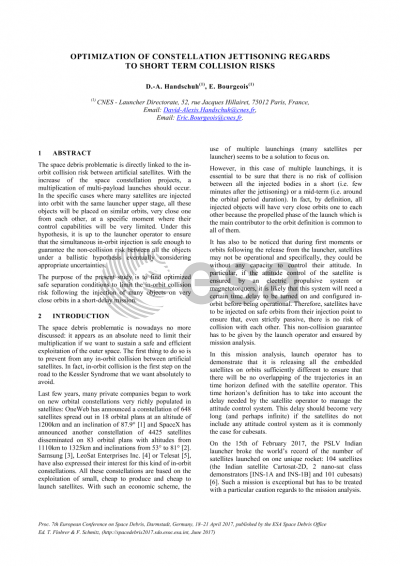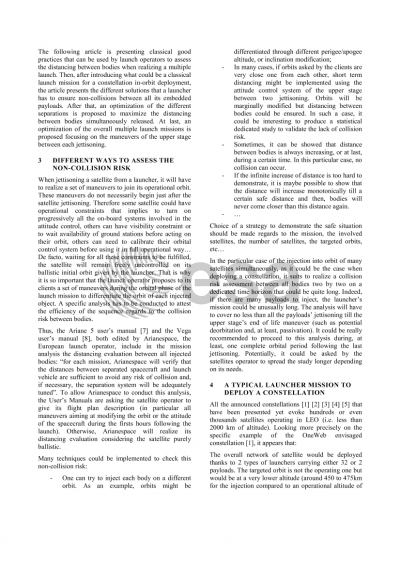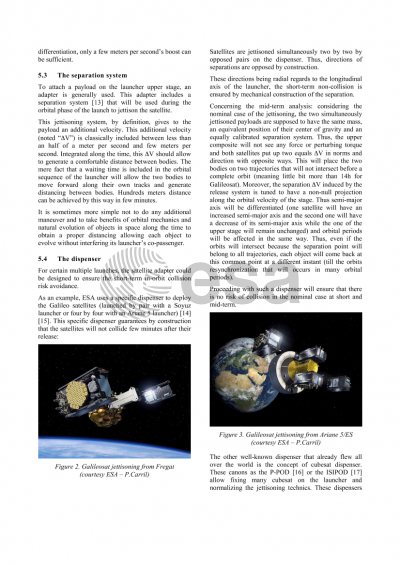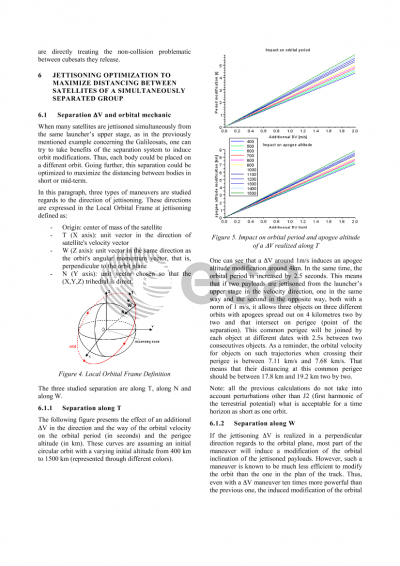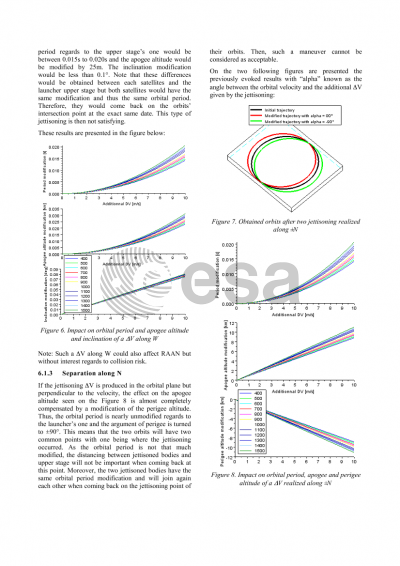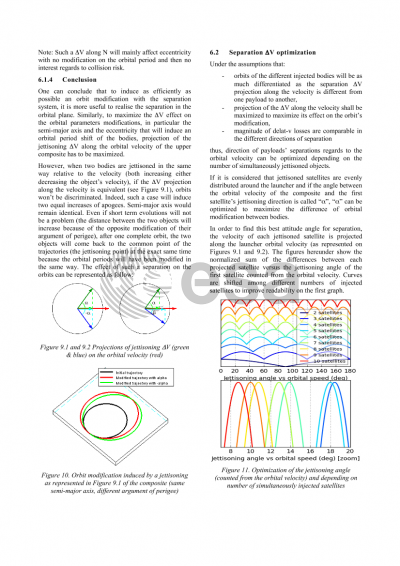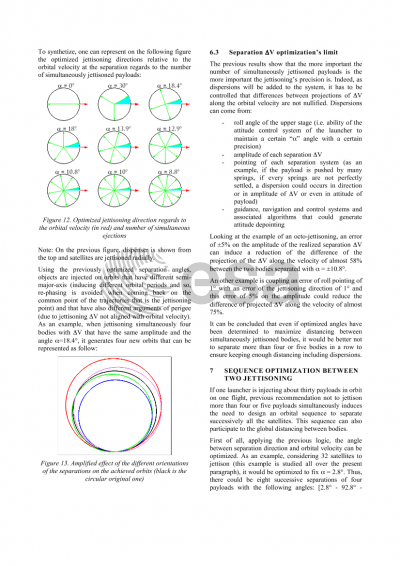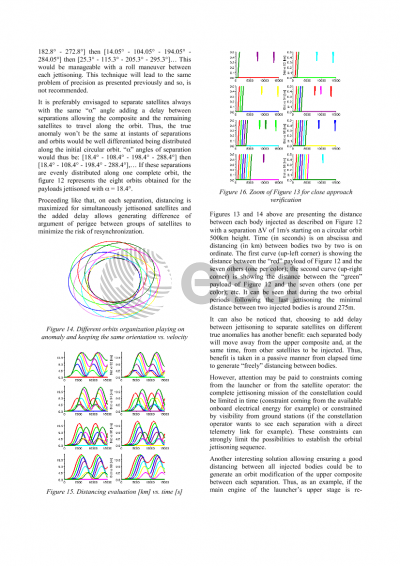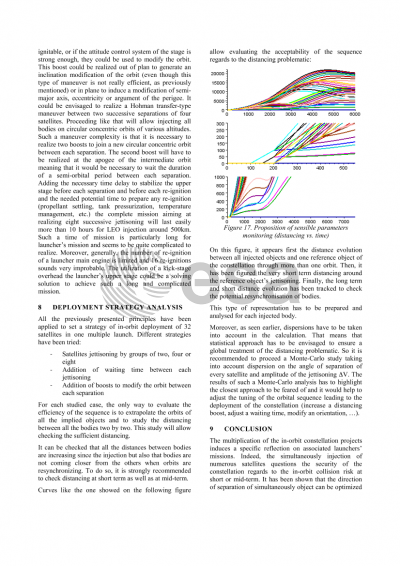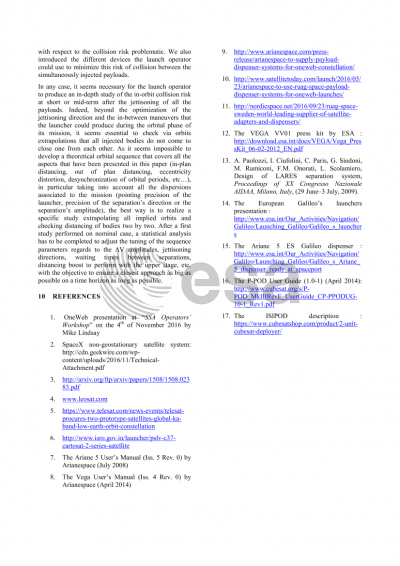Document details

Abstract
The general awareness of the space debris problematic that happened in the late 2000’s following the in-orbit Iridium-Cosmos collision reinforces the need for the operators to integrate in their development studies as well as in their mission analyses the assessment of the collision risk for their missions. In the specific cases where many satellites are injected into orbit with the same launcher upper stage, all these objects will be placed on similar orbits, very close one from each other, at a specific moment where their control capabilities will be very limited. With the emergence of constellation projects, including simultaneous deployments of tens of satellites, the short-term collision risk assessment following the injection into orbit will become a real issue that has to be precisely addressed. Considering the hypothesis of a very limited controllability of the satellites during many orbits after their injection, it is up to the launcher operator to ensure that the simultaneous in-orbit injection is safe enough to guarantee the non-collision risk between all the objects under a ballistic hypothesis eventually considering appropriate uncertainties. This study will present the research made by CNES to find safe separation conditions optimized to limit the in-orbit collision risk following the injection of many object on very close orbits in a short-delay mission. Uncertainties have to be considered to obtain realistic maneuver that are necessary to ensure a low risk level. This safe situation should be obtained via a spatial distribution of the injected objects that naturally allow limiting the short-term collision risks or planning additional maneuvers in the launcher mission analysis to ensure distancing between bodies and orbit modifications between all the payload jettisoning.
Preview
